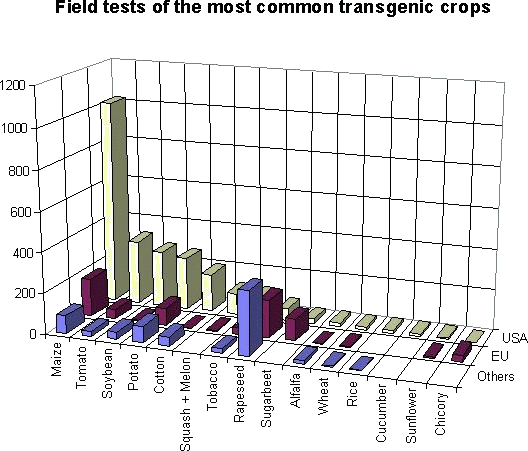|
|
|
||||||||||||||||||||||||||||||||||||||||||||||||||||||||||||||||||||||||||||||||||||||||||||||||||||||||||||||||||||||||||||||||||||||||||||||||||||||||||||||||||||||||||||||||||||
|
1. IntroductionBiotechnological procedures have been employed over millennia to produce human food stuffs such as bread, yoghurt, beer, wine or cheese. Ancient peoples made use of microorganisms like yeast and bacteria without even knowing of their existence. Today, we know that there are innumerable distinct yeast and bacterial strains, some of which are exploited in commercial fermentation processes after having being selected for certain characteristics to optimise product quality or production processes (Hui and Khachatourians, 1995). Only limited information is available about the genetic background of the specific traits of most of the microorganisms we employ today in fermentation processes. Modern techniques of biotechnology make it possible to introduce distinct genes or groups of genes into a variety of organisms. The application of genetic engineering has become essential for biotechnology and many other modern biological and medical sciences. Apart from amylases which have been used for starch processing since the early 1980s, chymosin was the first commercial biotechnology product to be used in human food stuffs. It serves as a substitute for the calf stomach preparations, traditionally used as the natural source of chymosin, in the manufacture of cheese (Teuber, 1993). Although approved for use in cheese production by Swiss authorities as early as 1988, recombinantly produced chymosin has never been commercially used in this country due to a voluntary renunciation by the cheese manufacturers. It has since been approved in more than 20 countries (Teuber, 1993); more than 60 % of the hard cheese in the United States is produced by means of recombinantly produced chymosin. Germany, on the other hand, represents one of the more prominent countries that have not (yet) approved this product (Krohn and Pfleger, 1994). In some countries other recombinantly expressed enzymes and organic molecules produced through genetic engineering have also been approved. However, regulations with respect to enzymes and other products produced by genetically modified microorganisms differ significantly from nation to nation. 1.1 Field trialsGenetic engineering of agricultural crops has become a main activity of the research departments in the agro-industry. GMOs comprising at least 27 distinct plant species have been tested in field trials in the European Community (EC) (Table 1).
Table 1: Field tests in the European Community and in the United States
* Source: SNIFS (1996) as of 31 October 1996 Most of the field tests within the EC were performed in Belgium, France, Italy, the Netherlands and in the United Kingdom (81 %; >70 field tests per country); only 19 % of the releases took place in Austria, Denmark, Germany, Finland, Portugal, Spain and Sweden (SNIFS, 1996). Until October 1996, only 2 field tests had been conducted in Austria and 2 in Switzerland, and 60 in Germany. In contrast, the number of field tests in France totalled 228 and in the United States with more than 2,000 1. This uneven distribution is only partially accountable by regulatory and climatic differences of the countries cited; differences in the general public acceptance of gene technology in each country apparently plays an important role. In particular, the German-speaking populations in Europe appear more sceptical than others towards the application of this technology in the food industry. The public attitude towards gene technology should not be overlooked; in 1995, more than half of the field sites in Germany for testing transgenic plants were deliberately destroyed (Abbott, 1996; Hobom, 1996). 
Figure 1: Field tests of the most common transgenic crops. Sources: (i) USA: APHIS ('Field Test Permits' and 'Notifications' 1987-1996, as of 31 October 1996; (ii) EU: SNIFS (1996) as of 31 October 1996; (iii) Others (Australia, Bulgaria, Canada, Japan, New Zealand, Switzerland, South Africa and several developing countries): OECD-database on field trials as of 24 October 1996; DeKathen, 1996. The list of transgenic plants which have been field tested in the US is far more extensive than the one for the EC (Table 1, Figure 1). In Canada1, several hundred field tests have taken place. Approximately 150 releases have been reported in developing countries (De Kathen, 1996)1. Until 31 December 1995, reportedly 11 and 22 field tests took place in Russia and Hungary, whereas the figure of 60 field tests was reported for China (James and Krattiger, 1996). A single approval for a field test can include several field sites. This may in part be accountable for the fact that figures for the field tests in certain countries given by James and Krattiger (1996) are somewhat higher than e.g. the numbers derived from the 'summary notifications' (SNIFS) in the EC. Most of the research in the application of gene technology on food crops has sought to improve product quality and agronomic traits and develop resistance to pests (Table 2). Background literature about techniques and research goals in the area of transgenic plants can be found in recently published reviews (Lupi, 1995; Bendiek et al., 1996; James and Krattiger, 1996; Niederhauser et al., 1996; Estruch et al., 1997; Gaede, 1997), in special issues of journals in German (Biologie in unserer Zeit 4/1995: 'Gentechnik und Lebensmittel') or English (Trends in Biotechnology: 'Plant-product and crop biotechnology', Vol. 13 [9], 1995) and in books (Brandt, 1995; Potrykus and Spangenberg, 1995). Table 2: Research objectives
1 Data from various sources on field trials in the US, the EC as a whole and individual EC countries (Austria, Belgium, Denmark, Finland, France, Germany, Italy, the Netherlands, Portugal, Spain, United Kingdom), Switzerland, Bulgaria, Canada, Australia, New Zealand, Japan and some developing countries (Argentina, Belize, Bolivia, Chile, Costa Rica, Cuba, Dominican Republic, Egypt, Guatemala, India, Mexico, Peru, South Africa, Thailand and the Commonwealth of Puerto Rico) are continuously being compiled in a database at the agency BATS.
|
|||||||||||||||||||||||||||||||||||||||||||||||||||||||||||||||||||||||||||||||||||||||||||||||||||||||||||||||||||||||||||||||||||||||||||||||||||||||||||||||||||||||||||||||||||||
|
|




 Produkten.
Produkten.